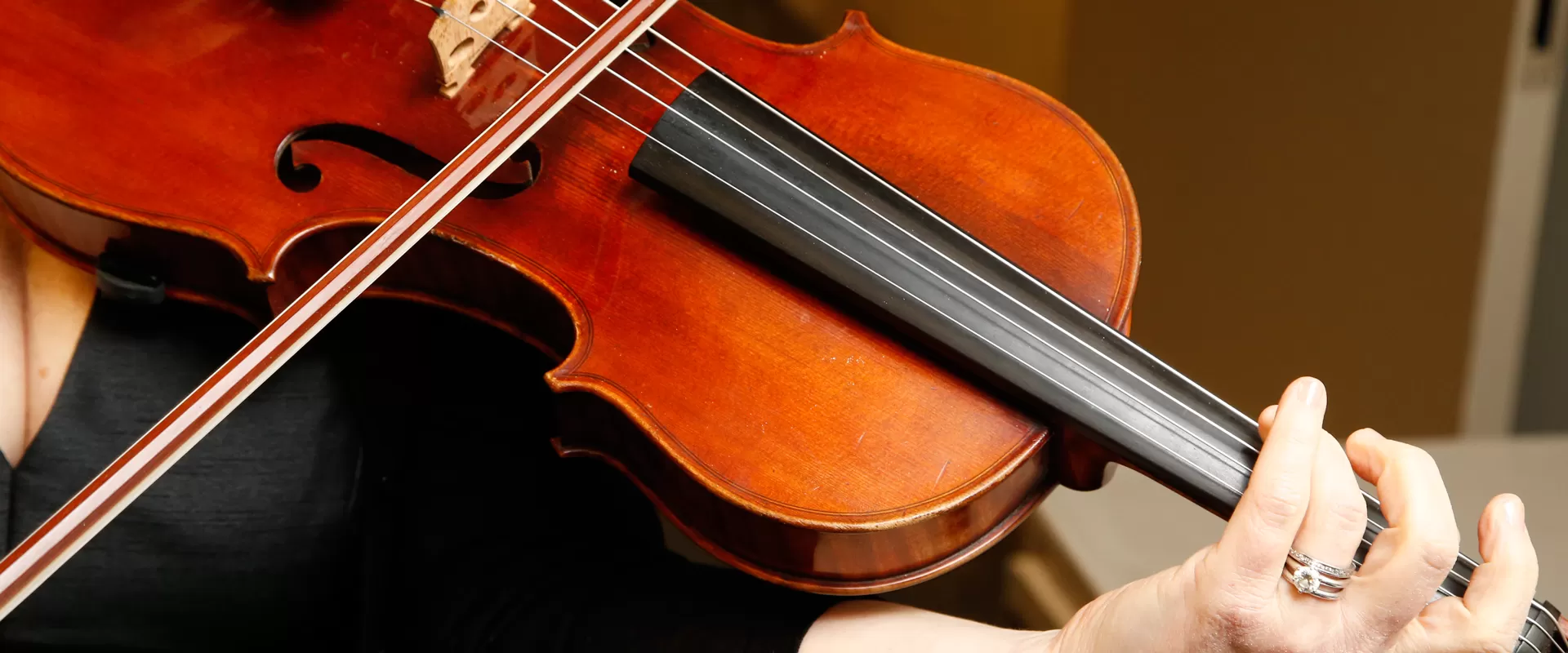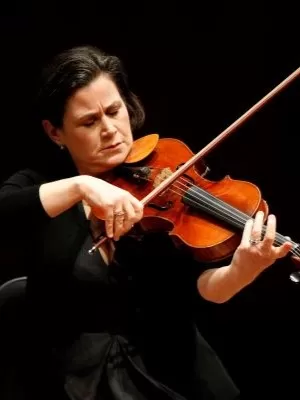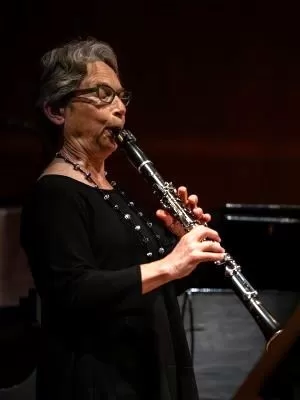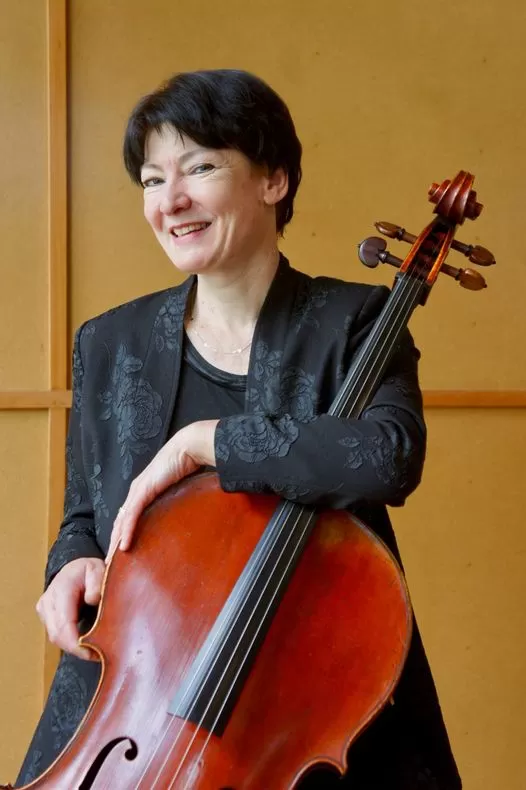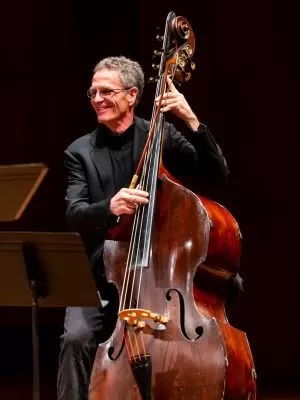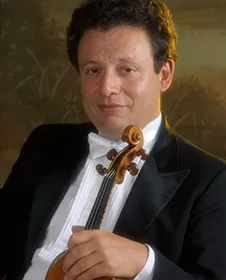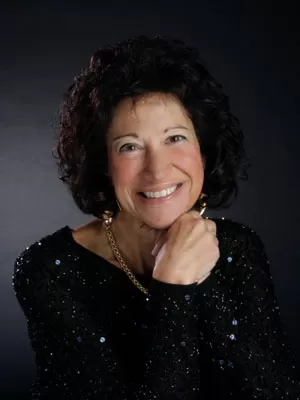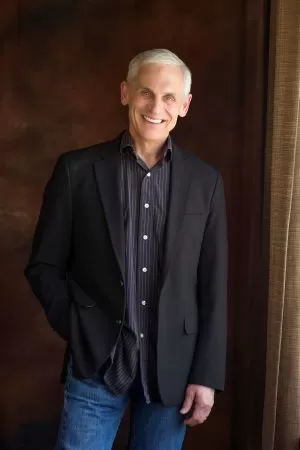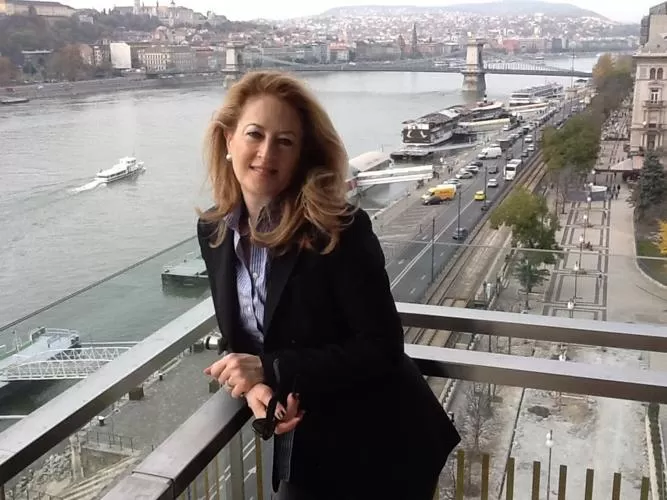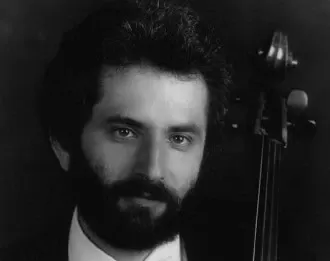Apr 7, 2002 - 12:00 pm
Pre-concert Lecture: “A Gift of Pain: The Aleksander Kulisiewicz Collection”
Bret Werb, Musicologist, United States Holocaust Memorial Museum
| Three Songs (Terezín, 1943) to poems by Arthur Rimbaud |
Hans Krasa (1899-1944, Auschwitz) |
|---|---|
| Erich Parce, baritone Laura DeLuca, clarinet Susan Gulkis Assadi, viola David Tonkonogui, cello |
|
| Sonata for Flute and Piano (1941) West Coast Premiere |
Herman Berlinski (1910-2001) |
| Jody Schwarz, flute Mina Miller, piano |
|
| Five Pieces for String Quartet (1923) | Erwin Schulhoff (1894-1942, Wülzburg) |
| Mikhail Shmidt, violin Leonid Keylin, violin Susan Gulkis Assadi, viola Mara Finkelstein, cello |
|
| Intermission |
|
| Camp Songs (2001) World Premiere Commissioned by Music of Remembrance |
Paul Schoenfield (b. 1947) |
| Julie Mirel, mezzo soprano Erich Parce, baritone Laura DeLuca, clarinet Mikhail Shmidt, violin David Tonkonogui, cello Jonathan Green, double bass Mina Miller, piano |
|
Three Songs (Terezín, 1943) - Hans Krasa (1899-1944)
to poems by Arthur Rimbaud
It is a sad irony that music of such sensitivity and wit was born in the confines of a place where people’s names were replaced with numbers. Interned in Terezín, Hans Krasa set these Rimbaud poems, in Czech translation, for a performance by the singer Walter Windholz at an evening of song to open the camp’s so-called “town hall.”
These three short pieces dream out loud, remembering sensual love, a walk in fresh fields, and the truths which only friends confront together. Like dear friends, the clarinet and strings lead the singer into his reveries and keep him company there. In 1928, the translator wrote, “I want to create poems according to Rimbaud’s poetic texts, which have to sound like a Czech original.” Krasa’s music supports both the rhythms of the Czech texts and the wistful boldness of Rimbaud’s imagery.
The Nazis converted Terezín, a former fortress outside of Prague, into a concentration camp in 1941. Unique among the Third Reich’s horrors, Theresienstadt (as the Germans called it) bred a grotesque combination of death and culture. Among 141,000 Jews and others who passed through were many artists and musicians. Cabarets, concert halls and stylish streets were set up to suggest to the outside world a model “city for the Jews,” masking the camp’s reality of starvation, disease, and regular deportations to Auschwitz. Meanwhile, in the face of fear and deprivation, both public and surreptitious creativity flourished in Terezín. A sham “self-government” actually supported a program of musical composition and performance. According to musicologist David Bloch, “written on the last page of Krasa’s manuscript for the Rimbaud songs is a rehearsal schedule: four were held in the Magdburg Barracks and one in the Dresden Barracks.” (Bloch: 1993 edition of the score)
Sonata for Flute and Piano (1941) - Herman Berlinski (1910 - 2001)
Born in Leipzig the son of Polish immigrants, Berlinski’s early contact with the non-Jewish world was limited by his strictly religious family and school, but as a young adult he rejected religion. Years later he would attain a position of great respect and influence as a composer of liturgical music for the Conservative and Reform synagogues in the United States. His death on Yom Kippur of 2001 left a void in the religious music community of Washington, D.C., where he served as minister of music of the Hebrew Congregation for nearly two decades.
Berlinski left Germany in March of 1933, three months after the Nazis came to power. He had graduated not long before from the Leipzig Conservatory, with a diploma as a piano soloist. During those student years he was among the many young musical talents who created political satire for the Weimar Republic’s cabarets. “I wanted to be part of a battle which was tragically lost before it ever was joined,” he later wrote. Before crossing the Nazi-controlled German borders, leaving the land of his birth, he destroyed his political cabaret songs.
A brief stay in Poland, where he did not speak the language and found crushing misery among his Jewish relatives, convinced Berlinski that he needed to be in Paris to grow as a musician. The trip from Warsaw took months instead of days, because “I had no thought of entering Germany again, even with a Polish passport.” The three months in Poland left a deep impression on the young German-trained musician. “Poland is deep in my bones,” he wrote. It became “the world of my father, and my relatives, part of the millions of others who perished in the Holocaust, who live in my emotions and consciousness. They are in my music.” The German born Herman Berlinski entered Paris as a Polish Jew.
What he found there, after two years of studying with the celebrated Nadia Boulanger, was that he and she “shared a common dislike, namely each other.” He continues: “Most American-Jewish composers who had come to her tried very hard, and successfully so, to move out of a parochially-limited Jewishness into the larger realm of American music. They had good and valid reasons for doing so, and the music they eventually created became an asset to American culture…”
Berlinski wrote:
“I did not come to Nadia Boulanger from America but as a political and religious refugee from Germany, a country which had set out to destroy me and all those of my origins and persuasion. If being a Jew, so I felt, meant to face a dangerous, very dangerous world, it also required of me not only to be marked as a Jew but to learn from the bottom up to be one. Even Arnold Schoenberg at that time, re-converted in a most ostentatious fashion back to Judaism.
“My concern with Jewish music bewildered Nadia Boulanger. Eventually I left her and enrolled as a student at the Schola Cantorum, where Leon Algazi already taught Jewish Music as an academic subject. I was received with open arms by the French composer Daniel-Lesur and his group “La jeune France,” which also included Olivier Messiaen. They understood that I wanted as much to be a Jew as they were Catholics.”
Out of the relationship with this welcoming group, Berlinski recalled, came a piano piece, Hommage a Maurice Ravel, the first suite From the World of My Father, and the sketches for the sonata for flute and piano.
About the sonata, the composer wrote:
“The work, in the classical sonata form, is also an attempt to sublimate an historical Jewish Eastern European prayer model (Ahava Rabba), into a vehicle for a purely artistic, musical work. The rhapsodic and improvisatory mood of the Mode, familiar to me because I come from an Eastern Jewish environment, where this mode was the prevailing prayer mode, is maintained. Only in the last movement do I bring in dance-like, folkloristic elements, which are treated in a polychromatic and polytonal manner, a technique obviously derived from my acquaintance with the French Impressionist music school, especially with the work of Maurice Ravel. Marc Chagall, who lived at that time in Paris, also exerted a great deal of influence over me.
“This is not a complex work, and the Holocaust, which has marked so many of my later works, had not yet become a part of my consciousness. However, it was a declaration of independence from Nadia Boulanger…and an affirmation of that which I am, regardless of the price which one pays for such an act of faith.”
Berlinski donned a French uniform on September 1, 1939, and did not return to Paris; he left behind nearly all the music he had ever written. Resettling in America in 1942, he reconstructed the flute sonata, which was first performed in 1943 on the radio in New York, with Ruth Freeman, flutist, accompanied by the composer. The Sonata for Flute and Piano is recorded on Music of Remembrance’s CD, Art from Ashes, Vol. I, with flutist Jody Schwarz and pianist Mina Miller.
Five Pieces for String Quartet (1923) - Erwin Schulhoff (1894-1942, Wülzburg)
Emphatic rhythms dominate these pieces. Like many of his contemporaries, Schulhoff explores the dance suite, infusing new ideas into this relic of the renaissance and baroque periods. The presence of a tango among the pieces marks this composer as one of the stylish voices of his era.
The musically prodigious son of a German-Jewish family, Schulhoff was encouraged to explore his talent at an early age: at 10, in the Prague Conservatory; at 12, in Vienna; at 14, in Leipzig, where his composition teachers included Max Reger. By the time he was 19, Schulhoff was in Cologne, receiving honors as both composer and pianist. He served as an Austrian soldier in World War I. He spent 1919 through 1923 in Germany, hot on the trail of the radical new music scene. Schulhoff explored the worlds of atonality and expressionism, and fell deeply in love with jazz. The Berlin Dadaist painter George Grosz became his friend. The two shared a passion for amassing large collections of jazz recordings, and Schulhoff dedicated a 1919 jazz cycle, Picturesques for Piano, to Grosz. His prolific 1923-1930 period in Prague includes a “jazz oratorio” called H.M.S. Royal Oak, Rag-music, Cinq Etudes de Jazz, and a piece for alto saxophone and piano called Hot Sonata.
Socialist politics swept in to capture Schulhoff’s creative imagination in the 1930s: in addition to half a dozen symphonies, he composed a “manifesto on words by Marx and Engels” for choirs and winds in 1932-33. Not only did his compositional style change to reflect socialist doctrines, but also his political commitment brought him into conflict with the deadly forces at work around him. In demand all over Europe as a pianist, Schulhoff’s work, including the planned Berlin premiere of his opera Flammen, was banned from Germany after 1933. He performed under a pseudonym as a jazz pianist on Prague Radio after 1939. An effort to emigrate to the Soviet Union as a Soviet citizen led to his arrest in Prague in June of 1941. He died of tuberculosis in the Wülzburg concentration camp, in Bavaria, a little over a year later. The Five Pieces for String Quartet was premiered in 1924 at the International Society for New Music Festival in Salzburg. It is recorded on Music of Remembrance’s CD, Art from Ashes, Vol. I, with violinists Mikhail Shmidt and Leonid Keylin, violist Susan Gulkis Assadi, and cellist Mara Finkelstein.
Camp Songs (2001) - Paul Schoenfield (b. 1947) Commissioned by Music of Remembrance World premiere: April 7, 2002, Benaroya Hall, Seattle, WA at Music of Remembrance’s Holocaust Remembrance Day concert.
Camp Songs is a setting of five poems written in the Sachsenhausen concentration camp during World War II. The poems are part of an extensive collection of music, art and poetry by hundreds of camp prisoners, compiled by Aleksander Kulisiewicz, a non-Jewish Polish survivor who was incarcerated because of his politics. After liberation, Kulisiewicz devoted his life to collecting these works, which are now housed in the United States Holocaust Memorial Museum. Music of Remembrance Artistic Director Mina Miller discovered the collection while doing research in the Museum’s archives. She decided, “There was no question that I wanted Schoenfield to do something with this.”
Miller and Schoenfield met in July 2000 at the Museum to delve into the collection, with the guidance of resident musicologist Bret Werb. Schoenfield selected five poems, all by Kulisiewicz himself. Schoenfield was especially drawn to the mocking, sarcastic ones. As he told a Seattle public radio audience, “When I saw the movie The Producers, I decided that if I were ever going to express my anger to God about the Holocaust, it would be like that.”
Camp Songs challenges the expectations of even the most hardened student of Holocaust art. Schoenfield has selected poems that lay bare the raw life and fury seething beneath the terrors of the camps. “The poems that I am setting,” he writes, “are caricatures which (in Joseph Conrad’s words) ‘put the face of a joke upon the body of truth.’ They are an affirmation of dignity; a declaration of man’s superiority to all that befalls him.”
Camp Songs received its world premiere performance at Music of Remembrance’s Holocaust Remembrance Day concert on April 7, 2002 at Benaroya Hall in Seattle, WA. Mina Miller, to whom the work is dedicated, was the pianist for that performance.
Camp Songs was a finalist for the 2003 Pulitzer Prize in Music. It is recorded on Music of Remembrance’s CD, Art from Ashes, Vol. I, with the composer at the piano.
